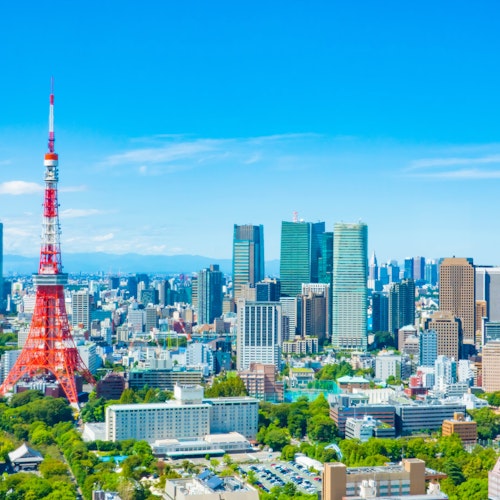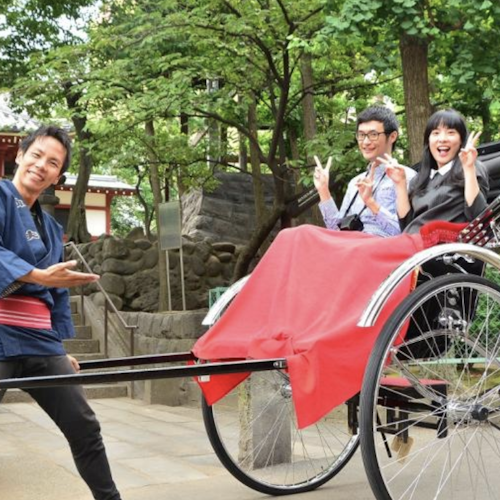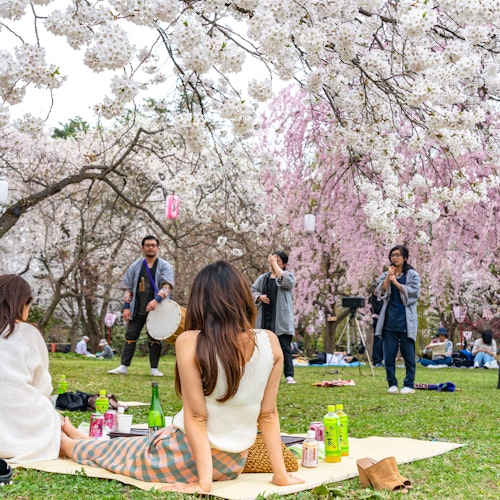
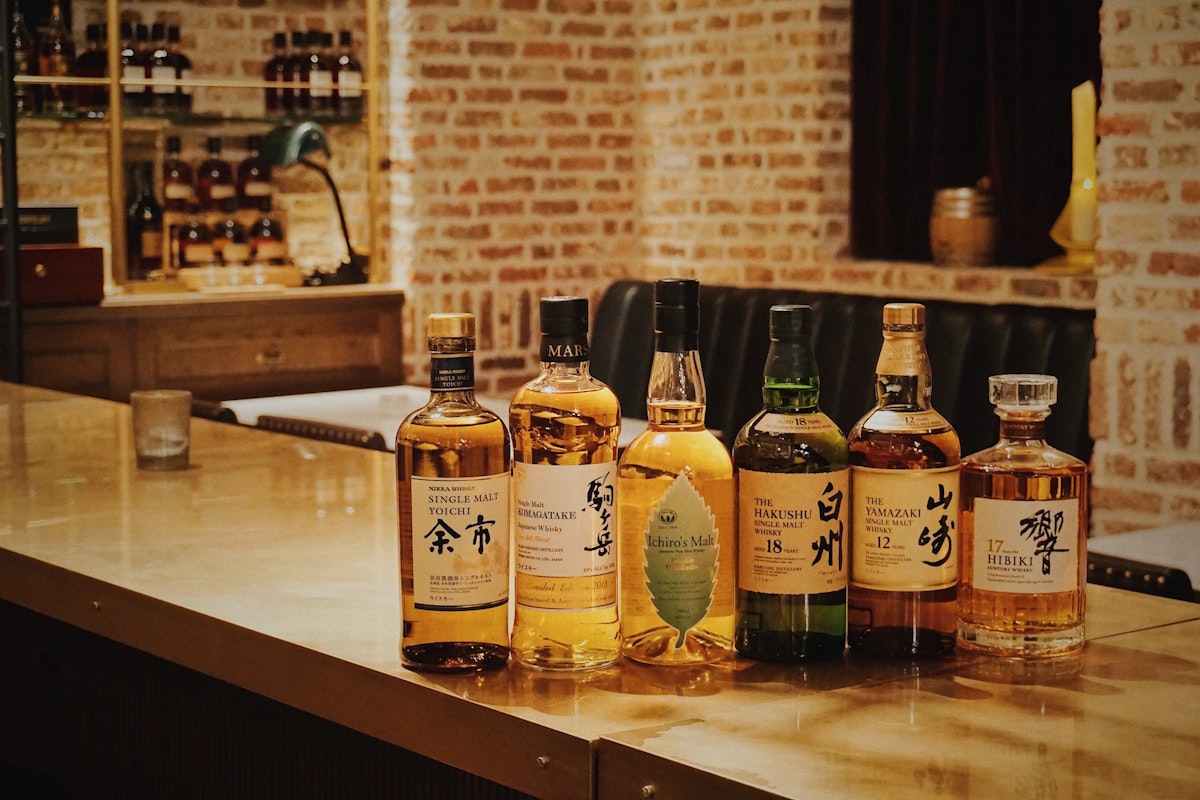
日本は桜、侍の歴史、美味しい寿司で有名ですが、最近ではウイスキーでも注目を集めています。日本は他の国に比べてウイスキーを作り始めた時間は短いものの、高品質で知られ、世界中のウイスキー愛好者から賞を受賞しています。しかし、多くの人にとって、日本のウイスキーは依然として謎に思えるでしょう。それは何が特別なのか?どのように作られるのか?どのウイスキーを試す価値があるのか?
この旅の目的はまさにそのことです。私たちは日本のウイスキーを理解しやすくし、ユニークなところを探求するためにここにいます。日本の有名な蒸留所の内部を見て、原材料から香りを与える熟成プロセスまで、ウイスキーについて学ぶ予定です。その過程で、最も良い楽しみ方、人気の理由、収集する価値のあるボトルについても話し合います。
日本のウイスキーは、精密さ、微妙さ、そして驚くべき風味の幅広さで際立っています。これは、他の蒸留所との交換やブレンドをせずに、各蒸留所が自社で多様なウイスキーのスタイルを生産するという日本の独特な実践に起因しています。これにより、各蒸留所は生産プロセス全体を制御できるだけでなく、各蒸留所にユニークなアイデンティティを助ける風味の多様なパレットが生まれます。

さらに、日本の蒸留所はさまざまな発酵技術を employ し、異なる酵母株を使用し、さらには異なる蒸留器の形状も使用することで、日本のウイスキーに見られる幅広いフレーバープロファイルに寄与しています。原材料の重要性は過小評価できません。地元の水の柔らかさ、スコットランドから輸入されたモルト大麦、そして一部の蒸留所で使用される地元の大麦が、日本のウイスキーの独特な味わいに貢献しています。熟成に関しては、日本のウイスキーはしばしば、独特の檀香木とココナッツの風味を持たせるミズナラのオーク樽を利用します。
日本のウイスキー製造プロセスは初めはスコッチの伝統に影響を受けましたが、数十年の間に、日本の蒸留所は自らの道を切り開き、日本のウイスキーに特有のアイデンティティを確立しました。スコッチのブレンディングのために樽を交換するという慣行とは対照的に、日本の蒸留所が自社で複数のタイプのウイスキーを生産する伝統が、両者の重要な違いです。
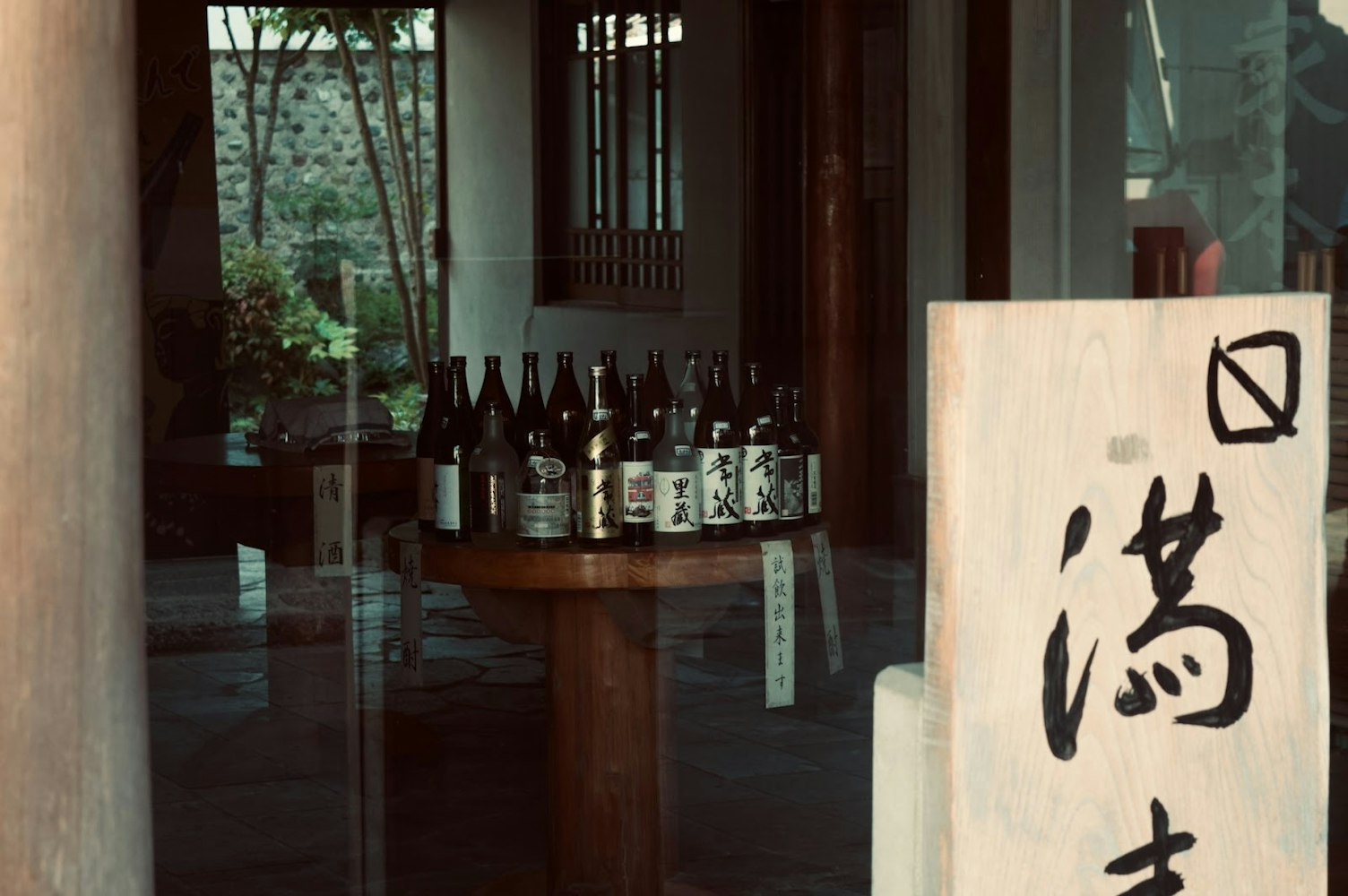
スコットランドと日本の多様な気候も、それぞれのウイスキーの独自の特性に貢献しています。スコットランドの一貫して涼しい湿った気候は熟成プロセスを遅くし、特定の風味プロファイルを結果として生み出します。一方、日本の多様な気候は、北部の厳しい寒冬から亜熱帯の南部まで、熟成プロセスを加速させ、広範な風味のスペクトルを生み出しています。熟成のための樽の選択も、もう一つの相違点です。日本原産のミズナラのオークがしばしば熟成に使用され、そのウイスキーにユニークでエキゾチックな風味を与えます。それに対して、スコッチウイスキーは一般的にアメリカ製やヨーロッパ製のオークで熟成されます。さらに、泥炭は多くのスコッチウイスキーにスモーキーな特性を与える一方で、日本のウイスキーでは控えめに使われ、より滑らかで微妙な風味を生み出しています。
日本には多くの著名なウイスキー蒸留所があり、それぞれがこの愛されるスピリッツに独自のアプローチを提供しています。その中で、山崎蒸留所は日本のウイスキーの国際的な評価に貢献する重要な存在です。
1. 山崎蒸留所
山崎蒸留所は1923年に京都の郊外に設立され、ウイスキーの世界では重要な地標です。日本初のウイスキー蒸留所として知られ、国内のウイスキー製造の伝統を形成しています。この蒸留所は、サントリーの創始者である鳥井信治郎によって設立され、スコットランドで訓練を受けた日本初のマスターディスティラー、竹鶴政孝の協力を得ました。この立地は、上質なウイスキー生産に不可欠な純粋な水源で特に選ばれました。数十年にわたり、山崎蒸留所は数多くの称賛されるウイスキーを生産し、それぞれが伝統的な技術と革新の精神を融合させています。山崎のシングルモルト12年、18年、25年などの製品は、世界中のウイスキー愛好者を魅了しています。この蒸留所は、山崎シングルモルトシェリー樽2013が世界最高のウイスキーに選ばれたことで、国際的な評価を得ました。山崎ウイスキーの独特で調和の取れたフレーバーのブレンドは、日本文化の重要な要素である「和」を反映しています。品質と調和へのこのコミットメントは、山崎、そして日本のウイスキーを世界舞台で際立たせます。 2. 白州蒸留所美しい日本アルプスの中に、緑豊かな森と湧き水に囲まれた白州蒸留所があります。1973年にサントリーによって設立されたこの蒸留所は、そのユニークなロケーションから「フォレストディスティラリー」と呼ばれています。穏やかな環境は単なる美的な魅力ではなく、新鮮な湧き水の豊富な供給を提供し、日本でウイスキー製造に最適な水とされています。

白州蒸留所は、軽やかで新鮮なものから濃厚でピート香の強い表現まで、幅広いウイスキーの提供で知られています。白州シングルモルト12年はその軽快で新鮮なノート、白州シングルモルト18年はより深い複雑さで、世界中のウイスキー愛好家から高く評価されています。この蒸留所の自然との調和へのコミットメントは、そのウイスキーに反映されており、毎杯が日本アルプスの本質を体現しています。
3. 宮城峡蒸留所
宮城峡蒸留所は、日本の北部、北海道に位置し、日本の長いウイスキーの伝統を証明する存在です。1934年に日本ウイスキーの父、竹鶴政孝によって設立された宮城峡は、名門ニッカウイスキー会社の最初の蒸留所です。竹鶴は、スコットランドに近い気候を持つこの場所を選び、本格的なウイスキー製造に適した場所としました。
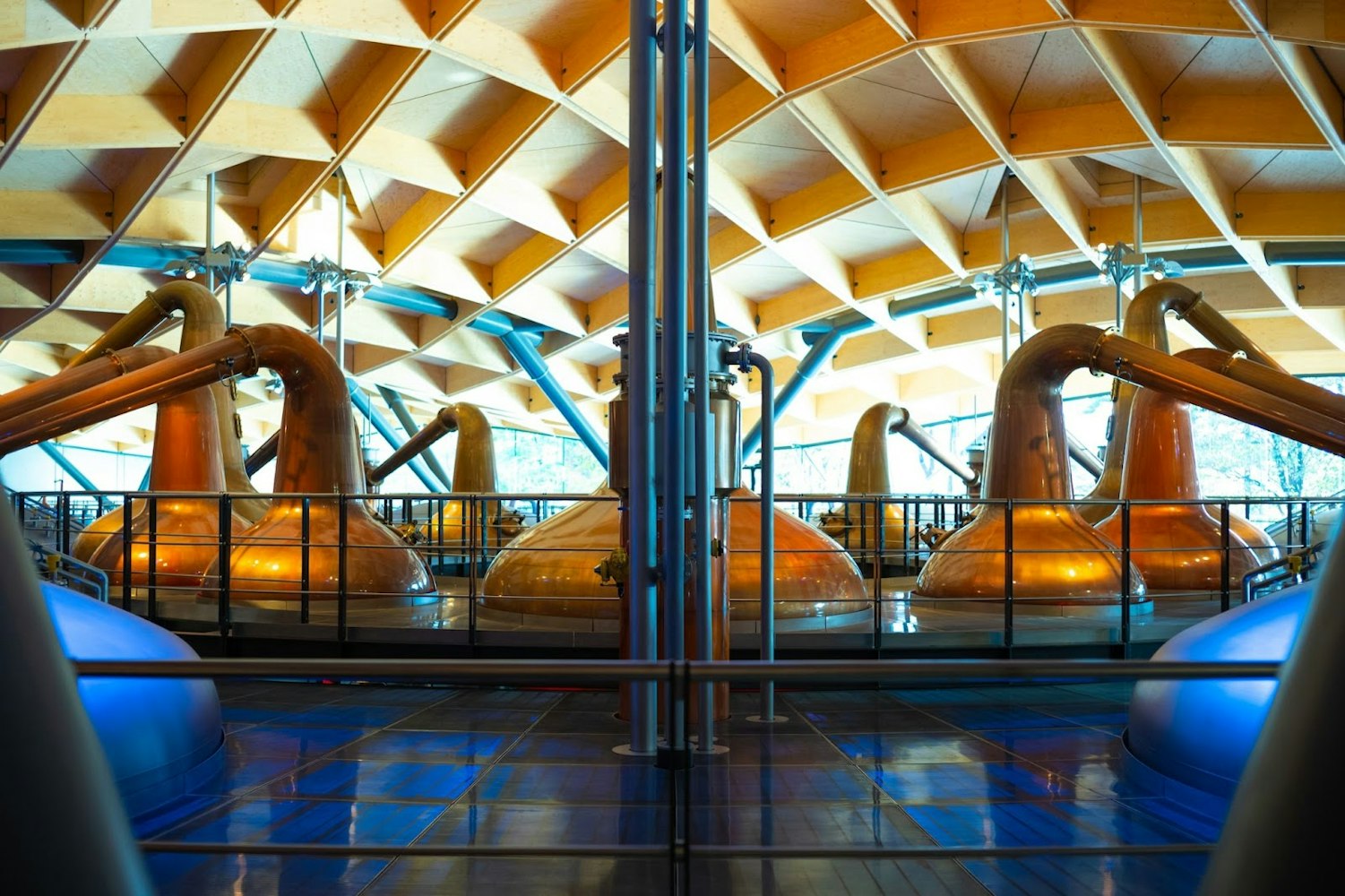
宮城峡蒸留所は、伝統的かつユニークな蒸留方法からくるリッチでピート香があり力強いウイスキーの生産で評判です。この蒸留所は、ほとんどの現代の蒸留所がその労働集約的な性質から廃止した直火の石炭炉蒸留釜をいまだに使用しています。この方法が宮城峡のウイスキーに独特のキャラクターを与え、他の日本のウイスキーの中でも際立たせています。力強いフルーティーな味わいが特徴の宮城峡シングルモルトなどの顕著な表現は、世界中のウイスキー愛好者から高く評価されています。歴史、伝統、革新の精神のベストミックスで、宮城峡蒸留所は日本のウイスキーの本質を真に体現しています。
日本のウイスキーのスタイル
日本のウイスキーは、スコッチやアイリッシュの仲間と同じように、各々独自の風味プロファイルと生産方法を持つ多様なスタイルで知られています。日本のウイスキーの世界で最も一般的に出会う2つのスタイルは、シングルモルトとブレンデッドウイスキーです。 1. シングルモルトウイスキー日本のシングルモルトウイスキーは、そのスムーズさ、バランス、独自の風味のブレンドで知られています。風味プロファイルは、蒸留プロセス、使用する大麦の種類、酵母株、蒸留釜の形状、熟成方法、熟成に使用する樽の種類などの要因に応じて、軽やかで花のようなものからリッチでスモーキーなものまでさまざまです。バリエーションがあるものの、日本のシングルモルトの共通点は、風味の調和があり、口当たりが心地よいウイスキーを生み出すことです。日本の著名なシングルモルトウイスキーとしては、フルーティーでスパイシーなキャラクターを持つ山崎12年、力強くピート香のある味わいの宮城峡シングルモルト、アルプスの立地を反映した新鮮で緑のノートが称賛される白州12年があります。
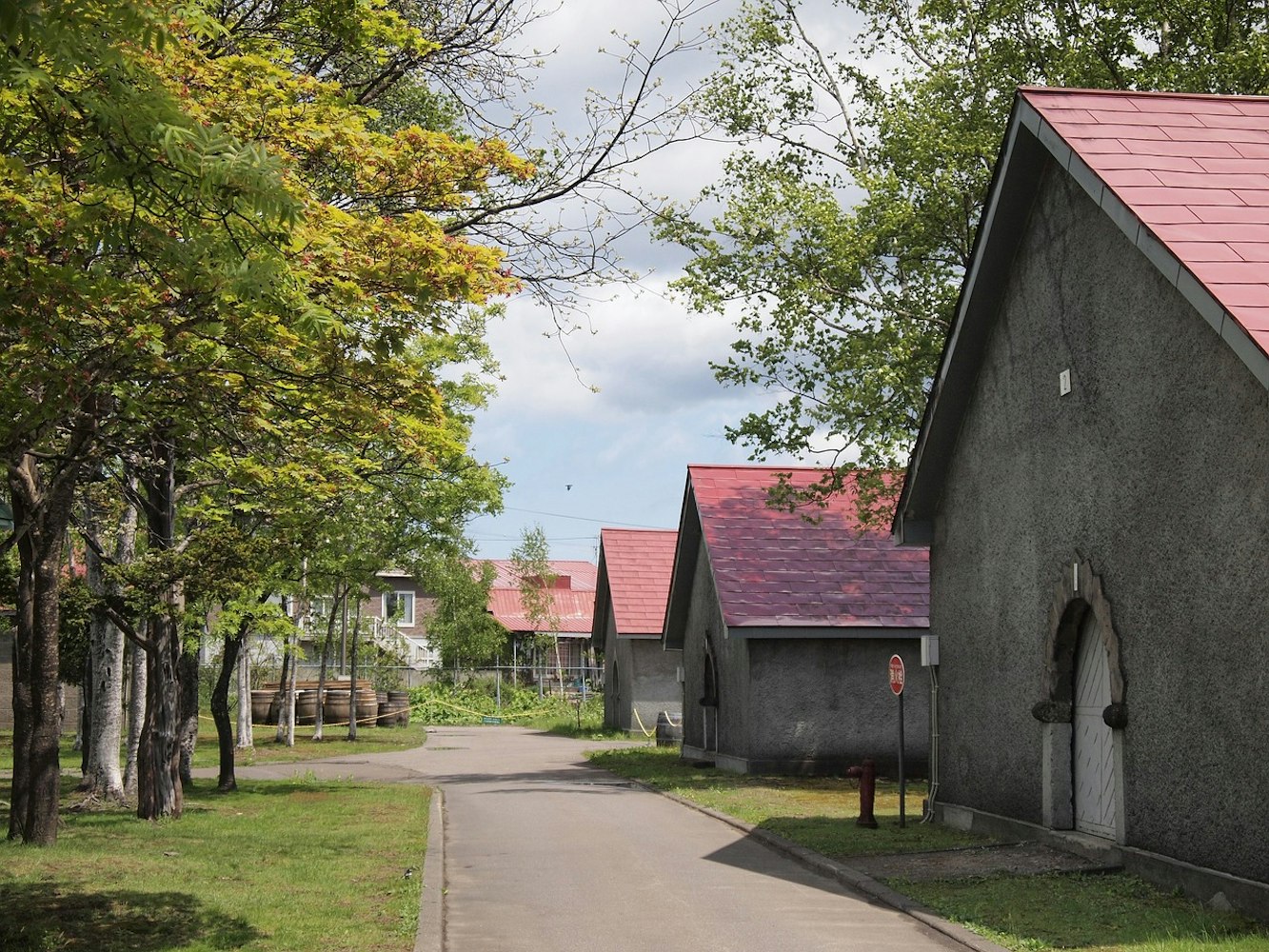
2. ブレンデッドウイスキー
日本のブレンデッドウイスキーで特に認知されているものには、サントリーの響き(Hibiki)シリーズがあり、響17年や響21年がその完璧なバランスと複雑さで称賛されています。また、ニッカ・フロム・ザ・バレルは高強度のブレンドを提供し、ボディが豊かでスパイシーな風味プロファイルを持つことで知られています。シングルモルトであれ、ブレンデッドウイスキーであれ、日本のウイスキーは品質とウイスキー製造の技術への献身を反映した風味の探求を提供します。
日本のウイスキーのカクテルとペアリング
日本のウイスキーは、その微妙な風味プロファイルが高く評価されており、カクテルに美しく生かされ、伝統と革新の融合を提供します。ハイボール、ウイスキーサワー、オールドファッションドのようなクラシックな日本のウイスキーカクテルは、ウイスキーの洗練された風味を際立たせ、新たな体験を飲む人に提供します。例えば、日本のハイボールはウイスキーの微妙な甘さとソーダ水の爽快感を組み合わせており、山崎12年のようなボディのしっかりとしたウイスキーを混ぜたオールドファッションドは、この古典的なカクテルに新しい洗練のノートをもたらします。
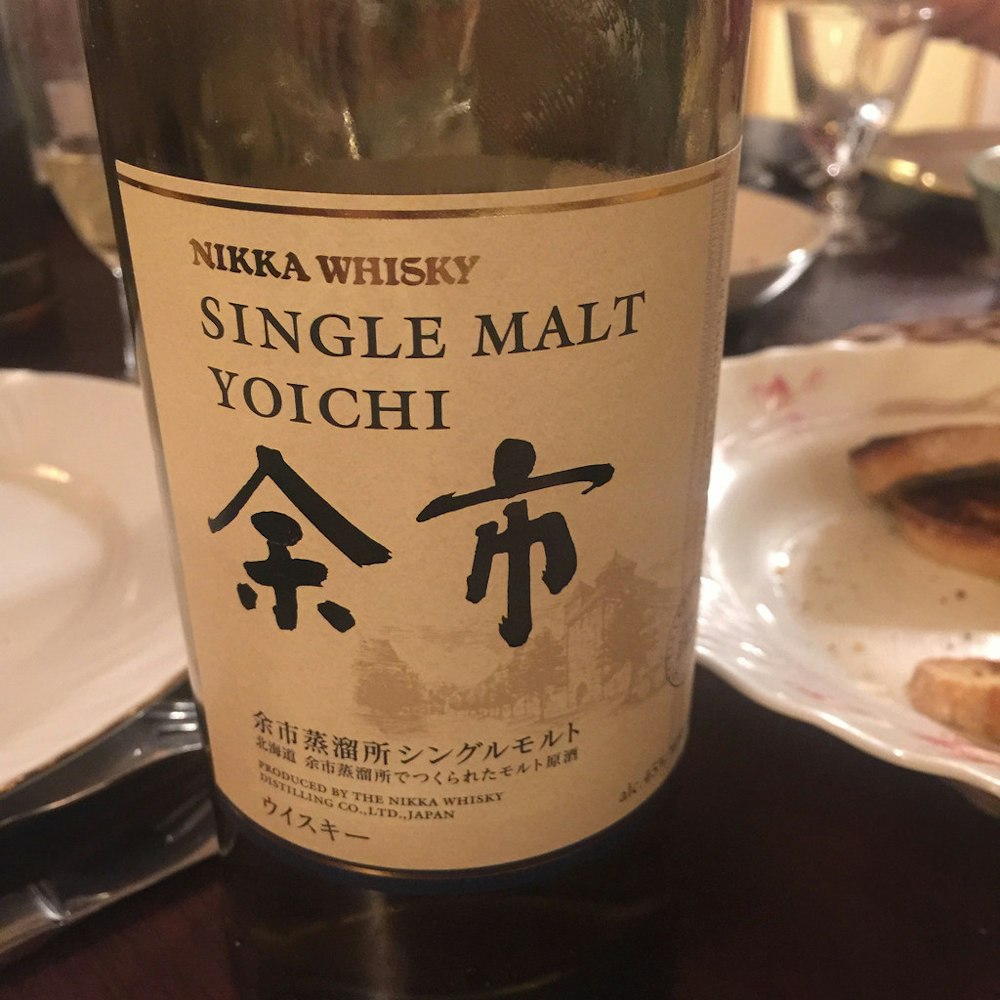
さらに、正しく食事とペアリングすることで、日本のウイスキーは本当にその魅力を発揮し、食事体験を感覚的な冒険へと変える可能性があります。軽やかで花のようなウイスキーは、寿司や刺身といった海鮮料理に良く合い、一方、力強いスモーキーなウイスキーは、グリルしたお肉と美しくマッチします。特にチョコレートベースのデザートは、甘くフルーティーなノートを持つウイスキーとペアリングすることで高まります。カクテルを作る時も、食事を計画する時も、日本のウイスキーは発見を待つ風味の組み合わせの世界を広げます。
日本のウイスキーを味わい、楽しむ
日本のウイスキーの世界に足を踏み入れることは、飲むという行為を超え、見る、嗅ぐ、味わうことを通じた完全な感覚的な体験です。ウイスキーの適切な提供は、通常はノーズ形状のグラス(グレンケアリンやコピタなど)を選ぶことから始まります。これらのグラスはウイスキーの香りを集中させるために設計されています。ウイスキーはストレートで、または水を加え、ロックで楽しむことができ、各方法はウイスキーの風味プロファイルのさまざまな側面を明らかにします。
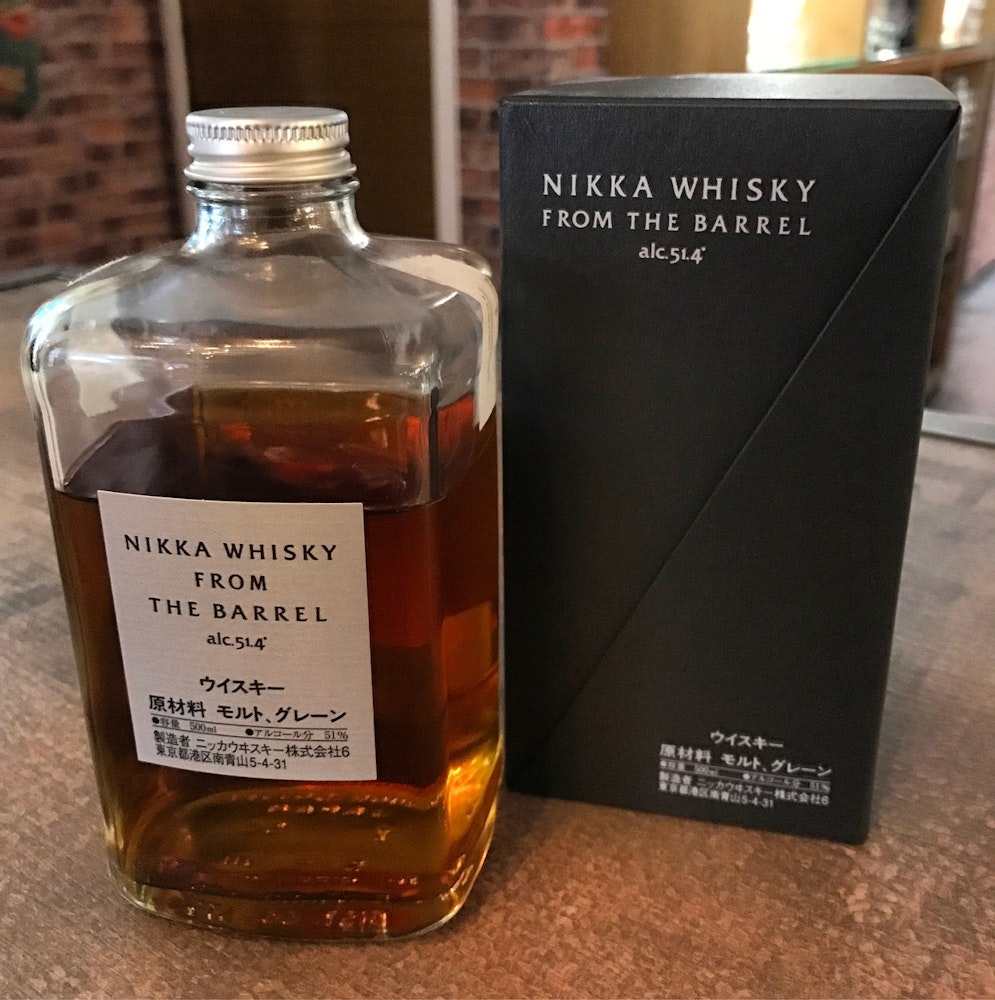
さらに、楽しむことを超えて、日本のウイスキーを評価するには、香りを嗅ぎ、味わう技術が欠かせません。ノージングは、味わう前にウイスキーの香りを吸い込むことで、果物からスモーキーなものまでさまざまな香りのノートを探し出します。口に含む行為では、ウイスキーを滑らせて口の中全体に広げ、風味、テクスチャー、アフターテイストを披露します。さらに、全国各地で行われるウイスキーのテイスティングイベントやフェスティバルに参加すれば、多種多様なウイスキーを探求したり、業界の専門家から学んだりする機会も得られます。要するに、日本のウイスキーを味わい、楽しむ旅は、風味の複雑さと卓越した技術を体験する expedition です。
日本のウイスキーは単なる飲み物ではなく、技術、伝統、そして忍耐のミックスです。原材料の選定から熟成プロセスに至るまでのすべてのステップが、最終的な味わいを形成します。スムーズなシングルモルトであれ、良くバランスの取れたブレンドであれ、それぞれのボトルにはユニークな特徴がこめられています。
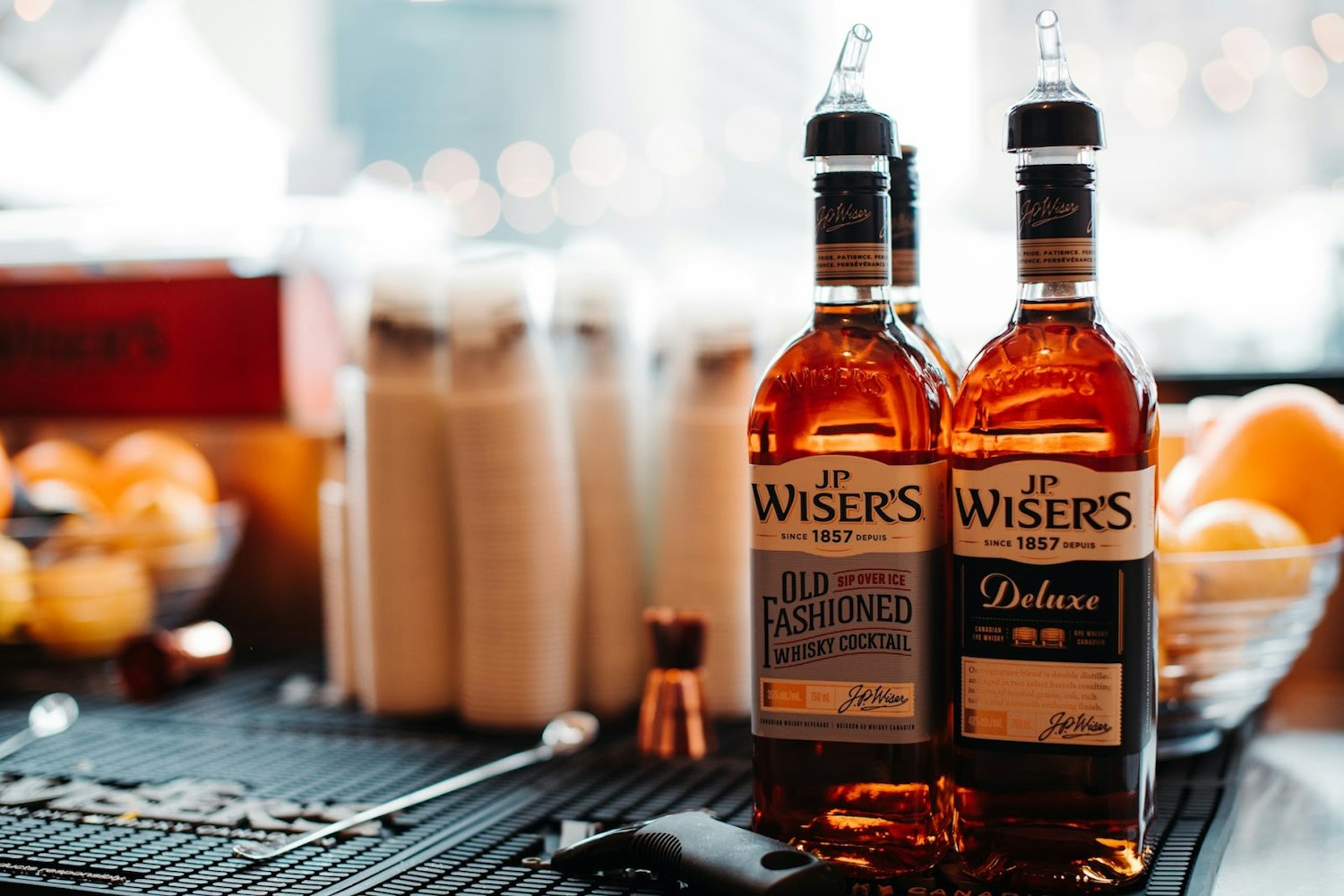
その人気が世界中で高まる中、日本のウイスキーは今後も長く親しまれることが明らかです。歴史に魅了される人もいれば、風味を楽しむ人も、多くの人々は単に新しいものを試す喜びを追求しています。それを楽しむ正しい方法はありません—ストレートで飲んでも、ロックで飲んでも、カクテルの中で飲んでも、すべての一口が体験です。
Delving into the world of Japanese whisky involves more than just the act of drinking; it’s a complete sensory experience that unfolds through sight, smell, and taste. The proper serving of whisky begins with selecting the right glassware, typically a tulip-shaped glass like a Glencairn or Copita, which are designed to concentrate the whisky's aromas. Whisky can be enjoyed neat, with water, or on the rocks, each method revealing different aspects of the whisky's flavor profile.

Beyond serving, appreciating Japanese whisky encompasses the techniques of nosing and tasting. Nosing refers to inhaling the whisky's aroma before tasting, teasing out various scent notes, which could range from fruity to smoky. The act of tasting, where the whisky is sipped and allowed to coat the palate, unravels the flavors, textures, and aftertaste. Coupled with this, participating in whisky tasting events and festivals across Japan can offer enthusiasts an avenue to explore a myriad of whiskies and learn from industry experts. In essence, the journey of tasting and appreciating Japanese whisky is an expedition into a world of intricate flavors and superior craftsmanship.

本格的な日本の味を伝統的なガストロパブで体験してください。
Japanese whisky is more than just a drink—it’s a mix of skill, tradition, and patience. From the careful choice of ingredients to the aging process, every step adds to the final flavor. Whether it’s a smooth single malt or a well-balanced blend, each bottle has something unique to offer.
As its popularity grows around the world, it’s clear that Japanese whisky is here to stay. Some people enjoy it for the history, others for the flavors, and many for the simple pleasure of trying something new. There’s no right or wrong way to enjoy it—whether you drink it neat, on the rocks, or in a cocktail, every sip is an experience.
The best part of whisky isn’t just the taste—it’s the moments shared, the stories told, and the memories made. So take your time, try different bottles, and enjoy the journey. Every glass has a story. Make it your own. Cheers!
